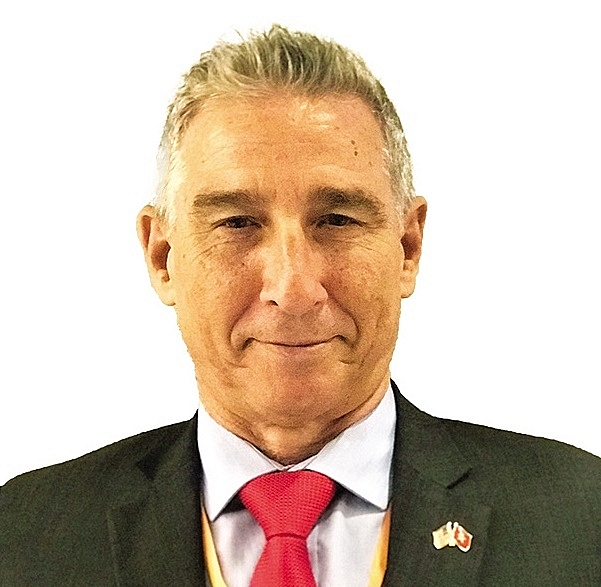The path towards Vietnam’s energy security
 |
| John Rockhold |
Under Vietnam’s Power Development Master Plan VII, generating capacity is increasingly coal-dominated, at over 40 per cent by next year. To implement even a clean coal policy, Vietnam will have to import tens of millions of tonnes of coal.
The country’s natural coal deposits are limited, and production has fallen short of past targets. Coal will have to be purchased on the global market using US dollar reserves, and brought via the East Sea to coal terminal ports and other transport infrastructure systems.
The energy security risks are worth noting based on the predatory economics in the region. A country with unlimited dollar reserves could outbid Vietnam for years of coal supplies, leaving us nothing.
The question arises if it is wise to use our dollar reserves for energy needs that we can develop using our own natural resources.
There may be an alternative using Vietnam’s energy plans, and the country’s natural gas deposits are a solution. People will say it may take years to develop these gas fields but we need power now to continue our economic growth and to sustain our GDP.
The solution involves buying natural gas on the global market while we develop our own fields, building gas fire power plants now that can use imported gas and our own gas once our fields are ready. But we could run into the same problems of coal imports in the short term when buying imported gas. The country presently has a US dollar trade surplus of over $30 billion with one of the world’s biggest natural gas exporters.
There are other considerations that make this energy security solution more favourable. One is a stronger Vietnamese energy plan that places greater emphasis on the country’s domestic potential for energy efficiencies and renewable energies, to be added to other clean sources of power for consumers and enterprises.
Another is strong Vietnamese companies working with the government to build a better and faster system for energy production that meets Vietnam’s climate commitments.
Natural gas is 60 per cent cleaner than coal, and good decision-making and new technology with a gas and renewable energy mix can enable Vietnam to tackle the growing environmental concerns and avoid many of the environmental problems that countries like the United States and China have experienced.
Not many people know that you can adjust a gas power plant to work with renewable energy production, something not possible with a coal fired plant.
Increasing the share of domestic gas in the mix returns funds to the Vietnamese government and domestic enterprises. Under current fiscal terms, around 40 per cent of the revenues from sales of natural gas accrue to the government for spending in Vietnam, and up to $7 billion in revenues per one gigawatt-hour of power.
However, the International Monetary Fund has estimated the cost of health and environmental impacts of the current Power Development Master Plan VII could be as high as $15 billion annually by 2030 due to coal.
Vietnam currently ranks 20th on the list of largest global users of coal-fired plants. Vietnam under the current power plan would be burning 15 times more coal, making the country the eighth-largest coal user in the world.
Energy security is important for any country, and we look forward to supporting the government in reaching this goal, and ready to support them in negotiations for temporary gas imports that look to be coming our way in order to create a cleaner and healthier Vietnam.
What the stars mean:
★ Poor ★ ★ Promising ★★★ Good ★★★★ Very good ★★★★★ Exceptional
Related Contents
Latest News
More News
- Kolon signs $48 million airbag supply deal with Autoliv (December 15, 2025 | 18:14)
- National Assembly approves Vinh–Thanh Thuy expressway project (December 15, 2025 | 18:02)
- Quang Tri green-lights $1.59 billion LNG-fired power project (December 15, 2025 | 17:59)
- Stress laid on high-quality FDI inflows (December 15, 2025 | 11:00)
- Can Tho utilises its growth advantages (December 15, 2025 | 09:09)
- Ca Mau unlocking potential to shape a more sustainable future (December 15, 2025 | 09:02)
- Major projects to be inaugurated nationwide (December 15, 2025 | 08:00)
- MoF workshop highlights mounting concerns over ODA on-lending costs (December 12, 2025 | 16:05)
- National Assembly approves pilot mechanisms to accelerate major projects in Hanoi (December 12, 2025 | 11:29)
- Legislation gives government flexibility for loan guarantees (December 11, 2025 | 18:04)

 Tag:
Tag:






















 Mobile Version
Mobile Version